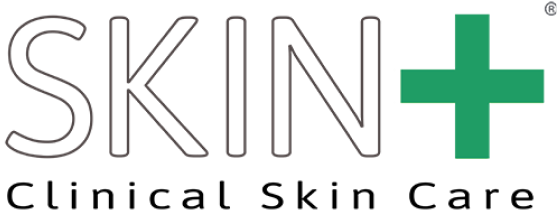In my clinic, more than half of the new clients I meet have already taken Accutane (isotretinoin) once—often twice. They’re here because they don’t want another round of the medication and they’re tired of being told it’s a “cure” that guarantees clear skin forever. I’m going to level with you: isotretinoin is powerful and can be the most effective treatment for certain cases of severe cystic acne—but it is not a genetic rewrite, and it is not a forever forcefield.
We clear acne without Accutane all the time using the right combination of topical treatments. Suppose you’ve finished a course of isotretinoin (or you’re considering it). In that case, the key to staying clear is a smart maintenance plan that keeps pores from re-clogging—retinoids to normalize shedding, actives that control excess oil, and antibacterial support that doesn’t rely on long-term antibiotics.
First things first: what Accutane does—and doesn’t—do
Isotretinoin is a prescription medication (a form of vitamin A called a retinoid) that shrinks sebaceous glands, dramatically reduces oil production, and normalizes how dead skin cells shed from the hair follicle.
We can also target those same pathways with topical products: properly dosed topical retinoids help clear out dead skin cells and keep the follicle open, and specific actives (like mandelic acid, niacinamide, and benzoyl peroxide) help reduce excess sebum and curb bacterial growth on acne-prone skin. In other words, while Accutane turns these dials quickly and powerfully, a well-built topical routine can also reduce sebum and keep pores clear—without another course of the drug.
What it doesn’t do is change your genetics. If your acne is the inherited form (I’ve written about genetic acne before—see my earlier blog; What Really Causes Acne), the underlying tendency to over-produce sticky keratin and oil remains part of you. Isotretinoin pushes the system into a quiet, low-oil state while you’re on it; after you stop, your skin slowly trends back toward its baseline.
In Short: Accutane turns down the volume; it doesn’t replace the speakers. When the medication goes away, the old system may start playing again—quieter for some people, loud again for others.
“But my doctor said I’d never break out again.” What the data actually say about relapse
Relapse after isotretinoin is common enough that we should plan for it—and how often it happens depends on dose, follow-up time, and maintenance care.
- A large, modern U.S. cohort (2017–2020; 19,907 patients) found that within one year of finishing isotretinoin, 22.5% needed more prescription acne treatments (relapse) and 8.2% needed a second course (“retrial”). Importantly, higher cumulative dose over the whole treatment course was linked to lower relapse and retrial; the daily dose mattered less than the total. European Medical Journal+1
- A widely cited earlier analysis also showed higher cumulative dosing (≥220 mg/kg) reduced acne recurrence and retrial at 12 months compared with lower totals. JAMA Network
- Across studies, reported relapse rates vary from ~10% to ~60% depending on definitions and follow-up. That huge range is why “40–50% relapse” circulates in conversation—it’s a mid-range number that’s true in some settings and not all. ScienceDirect
When does acne come back?
Patterns differ by person, but in the MarketScan cohort, the median time to relapse was 7.5 months after finishing the course. Many people notice oil and micro-clogging start to creep back around the 3–6 month window, which fits what I see clinically. News-Medical
Other work in patients who needed a second course found an average time to relapse of ~15 months (460 days), reminding us that not everyone relapses early; some drift back later. JAAD
Why acne returns after Accutane (even if your course “worked”)
-
Genetics & baseline severity. Accutane doesn’t change genetics. If your acne runs in families or started early (puberty or early adulthood), the tendency to hyper-shed dead skin cells and produce excess oil can come back.
-
Cumulative dose. It’s a “total exposure” medication: higher cumulative doses correlate with lower relapse; stopping early for side effects (dry skin, dry eyes, joint pain) can leave you under-dosed. Dermatology Advisor
-
No maintenance plan. After you stop, your skin pores drift toward their old behavior. If you don’t use the right topical routine (retinoid-led, with benzoyl peroxide and optional salicylic acid), micro-clogs re-form and white heads + inflammation follow. Evidence supports retinoid-based maintenance after isotretinoin to reduce acne recurrence. ScienceDirect+1
-
Hormonal changes. Menstrual-cycle shifts or birth control pills changes can nudge breakouts. (More on this below.
-
It wasn’t “genetic acne.” People who say they “never broke out again” may have had an acne imposter or mild acne that would have cleared with topicals.
Personal note from me
I took Accutane at 12 years old, before we understood as much as we do now about mood changes and other adverse effects. I know how it feels to be on that medication—and I never want to be on it again. That experience is a big reason we built a program that clears acne topically and keeps you clear long term.
“Accutane failed me” vs. “Nobody taught me maintenance”
Here’s the hard truth: most people who wind up taking isotretinoin multiple times were never given a robust post-Accutane skincare plan. That’s how the cycle happens: pores are squeaky-clean at the end of treatment; months of treatment wind down; then, 3–6 months later, the skin’s old behavior returns. Without a targeted routine, micro-clogs multiply, and people panic—“I need Accutane again.”
The fix is not always another round. The fix is maintenance.
- Topical retinoids Like Our Daily A Serum are the backbone—used long term, at the right dose for your acne-prone skin.
- Benzoyl peroxide provides non-antibiotic antibacterial action (great at suppressing Cutibacterium propionibacterium acnes/C. acnes) and helps prevent resistance when you need topical antibiotics for a short time.
- Salicylic acid or Mandeli Acid helps dissolve pore debris.
- A gentle cleanser, non-comedogenic moisturizer, and daily protective clothing/sunscreen keep the skin barrier calm while actives do their work.
Multiple clinical papers and reviews support retinoid-based maintenance after isotretinoin to reduce acne relapse. Karger Publishers
What to do after Accutane (or if you’re planning it): my blueprint
1) Lock in maintenance the day you finish
Don’t wait for the accutane purge in reverse (that slow re-clog over months). Start a post-Accutane skincare routine immediately—the right treatment here prevents a second course for many people.
Our Post-Accutane Skin Care Kit (used in-clinic) includes:
- Pro B5 Wash (a gentle cleanser that doesn’t strip)
- Daily A (our topical retinoid serum; retinol-based)
- CytoClear (mandelic acid for pore clarity—great for acne-prone skin)
- Renew 99 (barrier-supporting hydrator with peptides to offset dryness)
- Nourish RX (light, non-pore-clogging moisturizer)
Together, these active ingredients keep the follicle clear, calm low-grade inflammation, and support the barrier so you can use your actives on a regular basis without wrecking your face.
2) Where do antibiotics, birth control, and spironolactone fit?
-
Antibiotics (oral or topical): They do not clear out pores; they reduce inflammation and bacterial activity. They’re short-term tools—never a long-term maintenance plan. When used, pair with benzoyl peroxide to limit resistance and taper off quickly, because stopping antibiotics without unclogging pores means flare-back. Overuse can also disrupt the gut and skin microbiome (dysbiosis). American Academy of Dermatology
- Birth control pills: Some combined pills (estrogen + progestin) can help in selected female patients; progestin-only methods (mini-pill, some implants, some IUDs) can worsen acne for some. If you’re using birth control purely for skin, please know it’s not required to clear acne—topicals can do it—and the wrong hormonal choice can backfire. JAAD
3) Customize by acne type and hormones
-
Oil-driven, jawline, cycle-linked flares - strengthen the topical routine first; if needed, discuss hormonal options with your healthcare provider.
- Post-inflammatory marks & acne scars - once you’re safely out of the isotretinoin window, procedures (e.g., laser therapy) can help. Traditional guidance has been to defer resurfacing for 6–12 months after isotretinoin; newer analyses question how strict that needs to be for all laser types—so we individualize timing with your provider. Deep Blue
4) Sun + barrier basics
Retinoids and acids increase sensitivity. Use protective clothing and daily SPF. Buffer with moisturizers that are non-comedogenic.
5) Nutrition notes
No single healthy diet cures acne, but steady blood sugar and dairy awareness can help some. We’ll build something realistic for the long term—because consistency wins.
“Do I need a second course?”
Sometimes—yes. A course of isotretinoin is still appropriate for very severe acne or severe nodulocystic acne, especially if there’s scarring risk and other prescription acne medications have failed. But make the decision with data:
- Did you reach an adequate cumulative dose for your body weight? (Underdosing increases relapse risk.)
- Are you on consistent maintenance now?
- Are there hormonal drivers that deserve attention first?
- Are you experiencing ongoing adverse effects or a medical condition that makes a retrial
Recent big-data work supports optimizing cumulative dose to reduce acne relapse and second course rates—but again, topical maintenance is what prevents the cycle. Dermatology Advisor
What the journey feels like (so you’re not surprised)
- First month off Accutane: you may still feel dry and tight. Stay on a barrier-friendly routine.
- Months 3–6: oil and congestion may begin to return; this is when consistent skin care matters most. Many people who relapse do so in this window or by ~7–8 months. News-Medical
- If you see a sudden surge of pustules/inflammation, call your provider early—small tweaks now can prevent a spiral into another full course of treatment.
Our clinic approach (how we keep you clear without another course)
- Assess your type(s) of acne (comedonal vs inflammatory; distribution; possible imposters).
- Review past isotretinoin details (start/stop dates, daily dose, total/cumulative).
- Rule in/out hormonal patterning, discuss contraceptive pills/anti-androgen options with your prescriber if appropriate.
- Build a layered routine:
-
- Daily: gentle cleanser,Daily A, benzoyl peroxide (If you have inflamed acne) Renew 99/Nourish RX to buffer. Add CytoClear several nights per week.
- Track results every 4–6 weeks and adjust the right treatment intensity so you stay clear long term.
Pore-Clogging Watchlist (save this!)
When you’re rebuilding after isotretinoin, ingredient safety is everything. I maintain a Pore-Clogging Watchlist and a free Skin+ Ingredients Checker—paste in your products to catch landmines. (Yes, a “clean” moisturizer can still break you out.)
Check your products here: https://skinplus.com/pages/ingredients-checker
Bottom line
- Accutane doesn’t change your genetics. It can reset your skin, but if you’re genetically acne-prone, the tendency can re-emerge—often around 3–8 months after stopping (median ~7.5 months in a large cohort). News-Medical
- Higher cumulative dose lowers the risk of acne relapse and needing a second course, but maintenance still matters. European Medical Journal+1
- A smart, steady post-Accutane skincare routine (retinoid-led, with benzoyl peroxide and occasional salicylic acid) keeps pores clear and often prevents the “here we go again” cycle. Karger Publishers+1
If you’re done with Accutane and want a plan that actually sticks, we can onboard you to our Post-Accutane Skin Care Kit and customize around your skin, schedule, and history. We clear acne without Accutane all the time—with the right plan.


